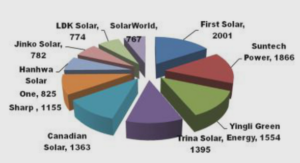Mémoire Natural Rubber grades, from polymer characteristics to engineering properties, tutoriel & rapport en PDF.
Introduction
Natural Rubber world context and technology
In 2009, the global world rubber consumption was approximately 21.8 million metric tons of which 9.6 million metric tons were Natural Rubber (NR) and the remaining were synthetics. Natural rubber is therefore among the most important elastomers used in manufacturing highly technical products such as tires and conveyor belts, as well as various goods, including household, engineering, medical, and commercial appliances.
When compared to synthetics however, production specifications of NR remain relatively poor since only the so-called technically specified grades (TSR) are characterized with respect to basic rubber test techniques, such as the Mooney viscosity, the Wallace Plasticity (P) and the Plasticity Retention Index (PRI). Other well-known grades, such as Ribbed Smoked Sheets (RSS) are classified with respect to visual inspection only.
NR is obtained by tapping the bark of the Hevea Brasiliensis tree. Processing factories receive Natural Rubber in two forms, either field coagula (dry rubber) or field latex (concentrated latex). Dry rubber is then processed into Ribbed Smoked Sheet (RSS), Air Dried Sheet (ADS), Technically Specified Natural Rubber (TSR), some of regular and constant viscosity (CV) grades, and others. Constant viscosity NR grades are produced by adding hydroxylamine (salt) either to the NR latex before the coagulation process or by spraying to the freshly coagulated material, in order to minimize the storage-hardening phenomenon, whose origin is currently assigned to the formation of (natural) crosslinks on storage. Natural Rubber is normally used when high elasticity related properties are desired, such fatigue and tear resistance. However, NR presents some disadvantages over synthetic rubbers due to properties inconsistency inherent to any natural products. The progressive hardening that occurs in NR upon long-term storage leads to an increase in plasticity number and Mooney viscosity. RSS are made from intentionally coagulated whole field latex and are classified through visual evaluation. To establish acceptable grades for commercial purposes, the International Rubber Quality and Packing Conference has prepared a description for grading, with details given in the so-called Green Book [3]. The International Standards Organization (ISO) first published a technical specification (ISO 2000) for Natural Rubber in 1964 [2]. Based on these specifications, Malaysia introduced a national standard Malaysian Rubber (SMR) scheme in 1965, and since then, all the natural rubber producing countries have started producing and marketing technically specified rubbers based on the ISO 2000 scheme. This resulted in the introduction of further national standards in addition to Standard Malaysian Rubber (SMR), i.e. Standard Thai Rubber (STR), Standard Indonesian Rubber (SIR), Standard Sri Lanka Rubber (SSR), Standard Vietnam Rubber (SVR), Indian Standard Natural Rubber (ISNR), etc. The claimed advantages of Technically Specified Rubbers over the conventional ribbed smoked sheet and crepe grades are a guaranteed conformity to certain technical specifications as defined by the national schemes or by ISO 2000. These commercial TSR rubbers are produced according to a carefully controlled procedure.
Among the specified and limited properties are the dirt, the ash and the nitrogen content, the initial plasticity P0, the plasticity retention index (PRI) and the Mooney viscosity.
………..





